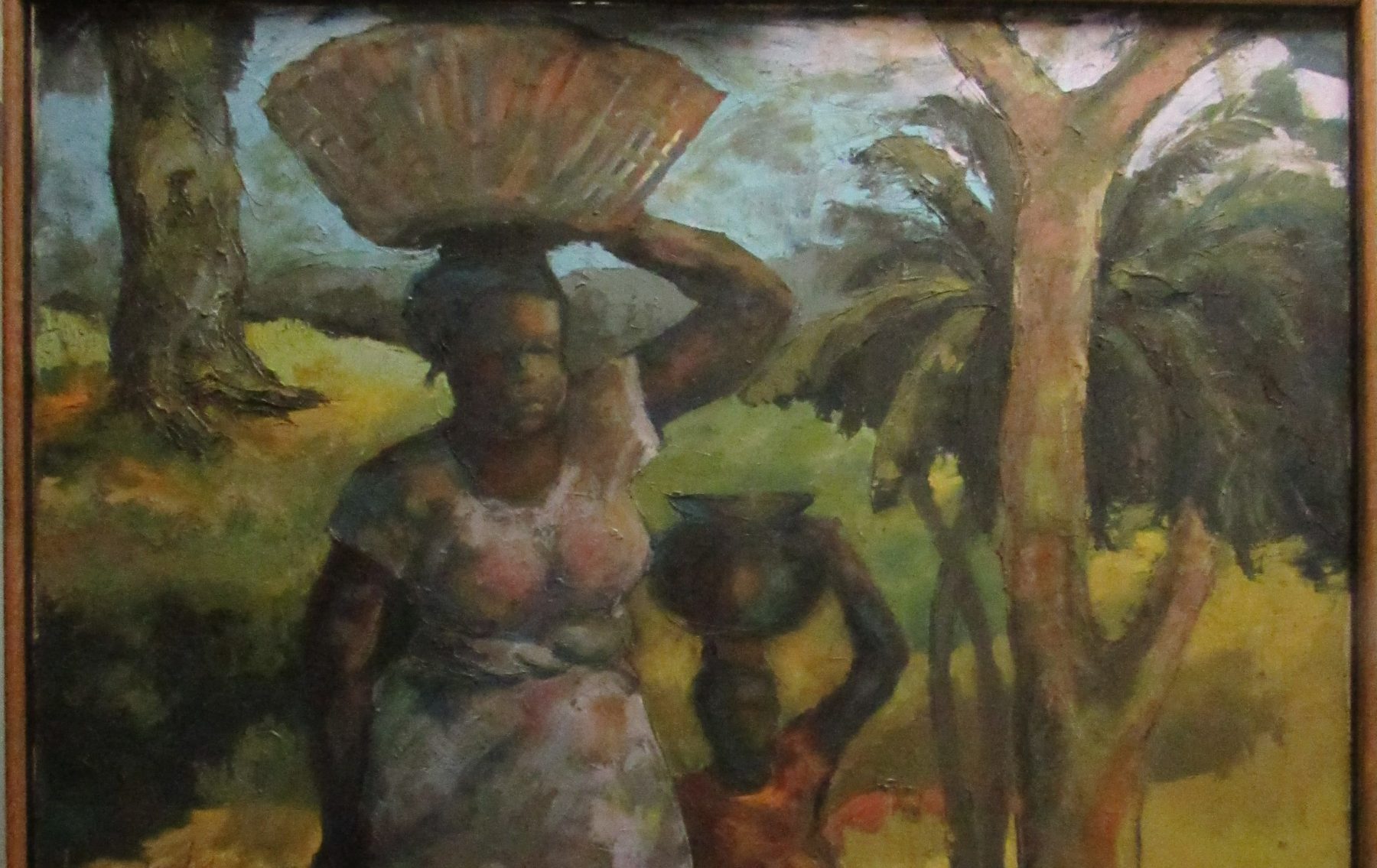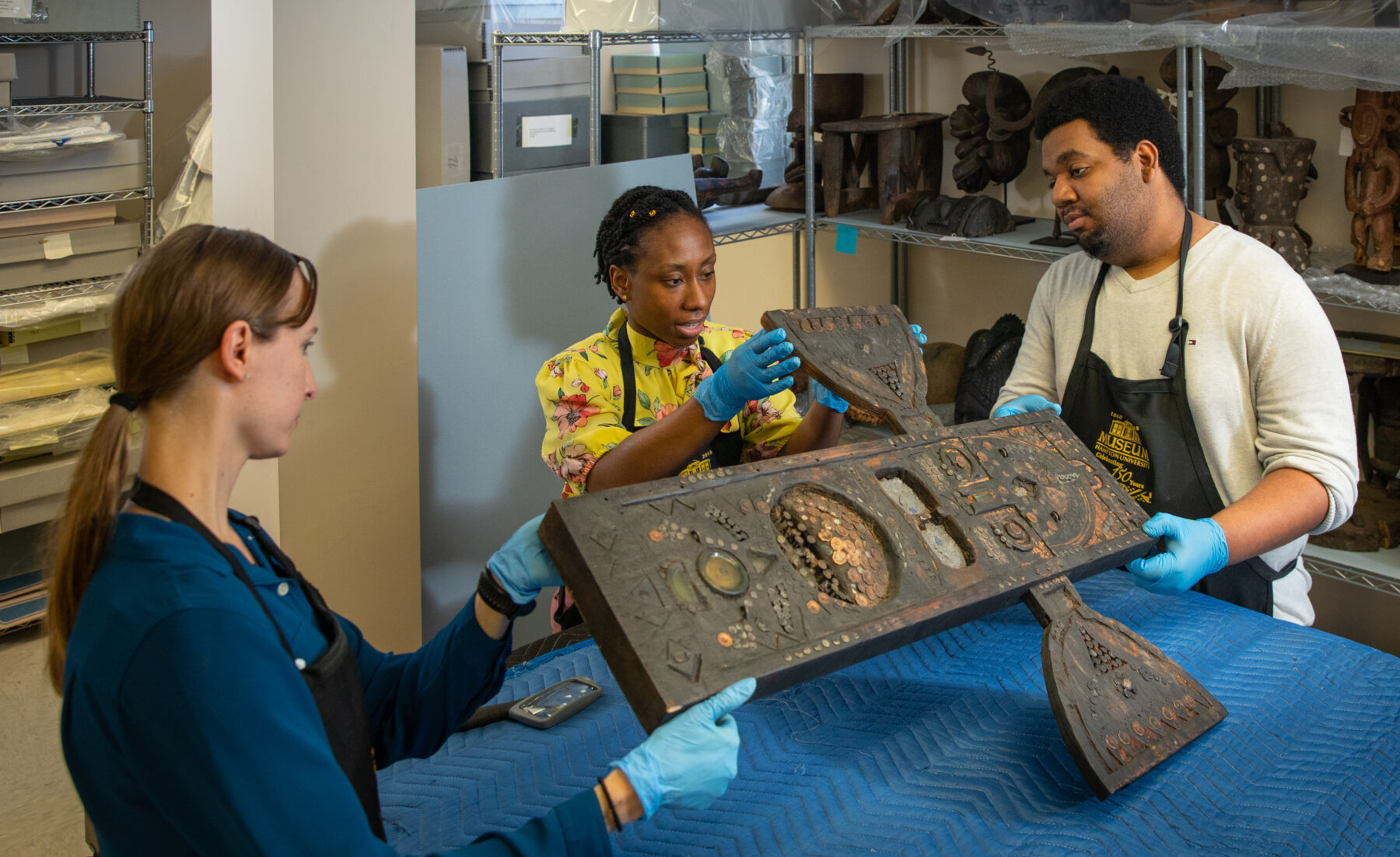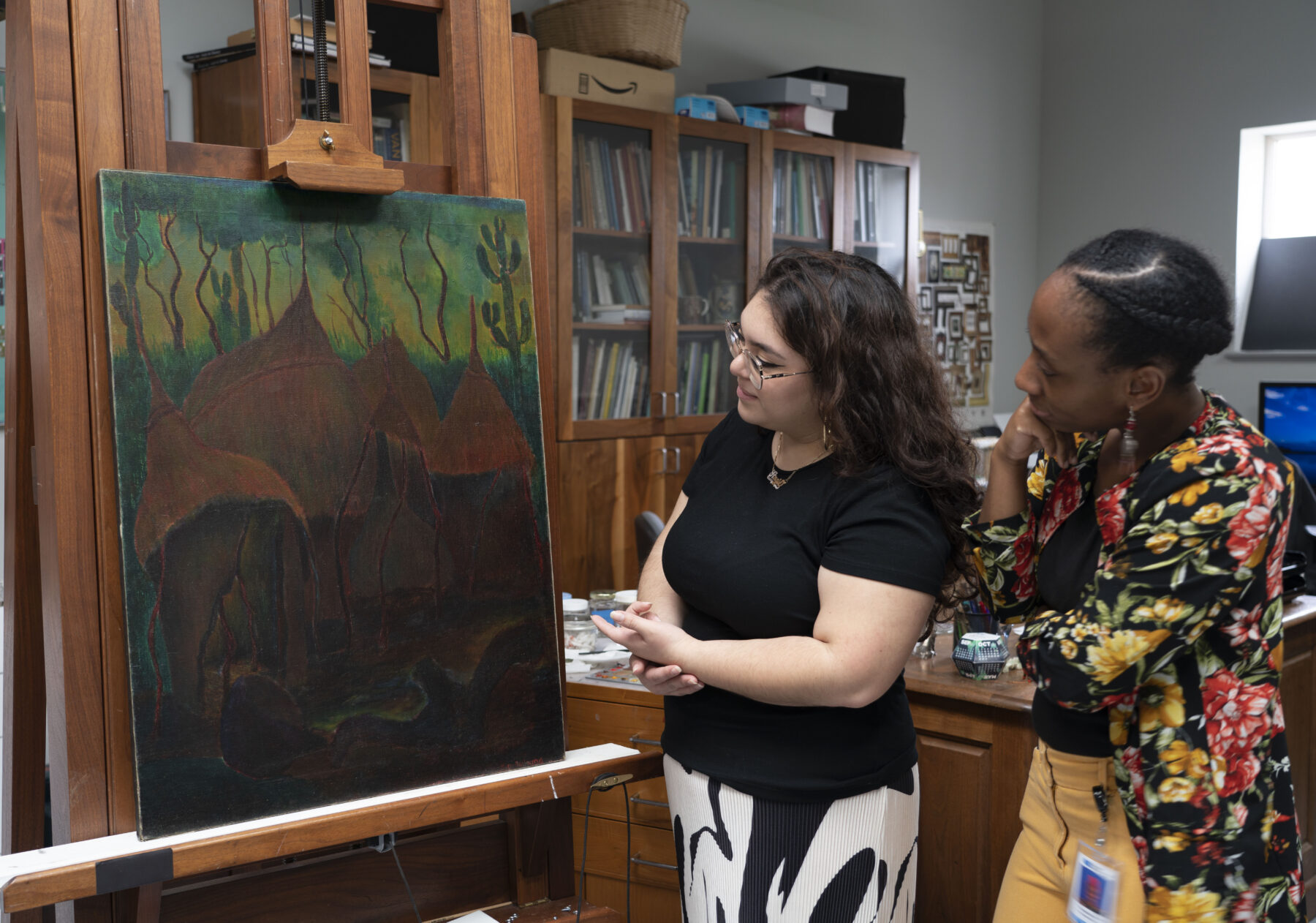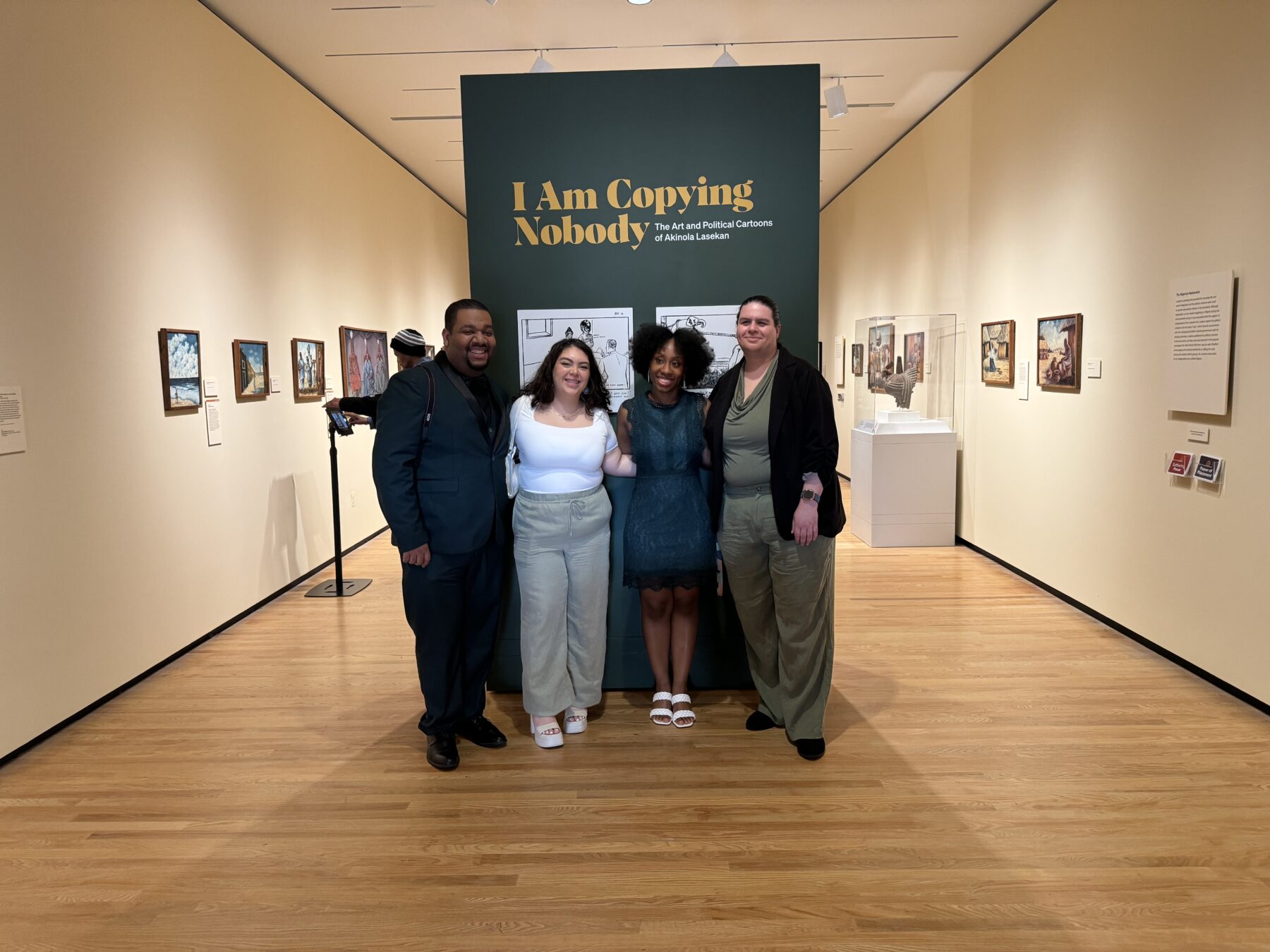What’s in a Name?: Emmanuel Owusu Dartey’s A Market Day


What’s in a Name?
“A picture is worth a thousand words” or in our case, a painting. Analyzing a painting can provide information such as the artist’s name (if the painting is signed), the subject of the work, and even the types of materials used. Analyzing a painting can also provide context on a specific time period or culture. Of course, the artwork itself is important but its title can be just as important and revealing. The title of an artwork might help us better understand the artist’s intent and the main idea they want the viewer to take away from their art piece. It is important to note that an art piece and its title can work together to allow us to form intriguing questions about the piece. For this series, we will ask, “what is in a name”, by taking a closer look at titles of artworks to understand how a title can make us question an art piece, change our perspective of a piece and/or reinforce it. Through this series we will come to the conclusion that titles of artworks have considerable meaning and are not always arbitrary.* We will start this series with Emmanuel Owusu Dartey’s, A Market Day to present how the title in conjunction with the subject of the piece, as well as our own personal experience can be used to draw conclusions about an art piece.
*The phrase ”what’s in a name”, comes from the line “What’s in a name? That which we call a rose by any other name would smell as sweet”, from the play Romeo and Juliet. This line, shared by Juliet, is in reference to the idea that Romeo’s last name essentially makes him her enemy, even though she believes he is more than his last name. Shakespeare uses this line to make the argument that names are arbitrary and the essence of an object will not change even if it has a different name.
Who is Emmanuel Owusu Dartey?
Emmanuel Owusu Dartey (1927-2018) was born in Mamfe, Akwapim, Ghana. He studied advanced art at Kwame Nkrumah University from 1961 to 1962 and studied painting and art teaching methods at the Rhode Island School of Design from 1963 to 1964. Dartey was the head of the Department of Painting and Sculpture at Kwame Nkrumah University of Science and Technology (KNUST) in Kumasi, Ashanti, Ghana. His paintings have been exhibited in numerous locations such as the Cultural Center in Kumasi and more recently at the Faie Afrikan Art Gallery, located in Chicago. He was a member of the Akwapim Six, one of the earliest art societies in Ghana.

A Market Day
A Market Day depicts a woman in a purple printed top and skirt that is swirling with green and red. She holds a multi-colored basket on her head. Next to her is a young girl with an orange top and skirt holding a dark-colored container on her head. Both appear to be on a dirt path surrounded by trees and other vibrant green vegetation. What is beautiful about this piece is that no object is one color. From the vegetation to the clothing, Dartey uses multiple colors to capture this rich scene. Even the brown skin tones of the woman and girl are infused with warm and cool colors.

1927-2018), Mid-20th century, Oil on canvas, Gift of the Harmon Foundation, Hampton University Museum, 67.253

Let’s take a closer look at the title and what else it tells us about the piece. Although the title is A Market Day, we do not see a market place in the painting. A market day also indicates that everyday is not a market day. On this particular day, the woman and young girl happen to be going to the market.
A title of an artwork can help solve a mystery of a painting or leave us scratching our heads with questions. For example, we know this painting by Dartey is about a market but where is the market? Other questions we can ask about this painting are…
- If the market is important enough to be in the title of the piece, why is it not shown?
- Are the woman and young girl going to the market or are they leaving the market?
- Who are the woman and young girl and what is their relationship to each other?
- At the market, are they usually the sellers or buyers and what might they be selling or buying?
- Why did the artist choose to title this piece A Market Day?
By using the title of the piece, the subject, and our own personal experience, we can answer some of the questions proposed above.

While viewing art, we might use our own experiences to draw conclusions or answer questions we have about an artwork. Using our own personal experience to draw a conclusion about a piece allows us to form a more personal connection with a painting, whether good or bad. For example, the title and subject of A Market Day reminds me of the trips to the grocery store that I would take with my mother. Because of my personal connection, for this piece I envision a mother and daughter going to or coming from the market. The title, A Market Day, signals to me that the market is important although it is not physically present. However, the fact that the mother and daughter are present, makes me believe that this intimate moment of the pair going to or leaving the market is more important than depicting the actual market. Lastly, when I think about the title, A Market Day, I picture the busy markets that I have been to that are filled with goods and people. However, Dartey has presented a more intimate and quiet depiction of the market place by painting a mother and daughter either leaving or going to the market.
Using the title, subject, and my own personal experience enabled me to make specific conclusions about A Market Day. The title was a key piece of information that allowed me to connect with the piece by using my own personal experience of grocery shopping with my mother. If the title was perhaps Woman and Girl on Path or Afternoon Walk, my connection and perception of the piece would have changed. By using the title, subject, and your own personal experience, you might have developed a different conclusion about this piece. Multiple people having different conclusions about a piece does not make one conclusion more valid than the other. In actuality, different conclusions provide a space to have more thoughtful discussions on why a piece of art speaks to us differently.
Art exercise!: Analyze A Market Day again with another person. Write down what questions and/or conclusions you both have about the piece and why. Share your questions and conclusions with each other to see how they are similar or different.
References
Brown, Evelyn S. “Africa’s Contemporary Art and Artists: A Review of Creative Activities in Painting, Sculpture, Ceramics and Crafts of More Than 300 Artists Working in the Modern Industrialized Society of Some of the Countries of Sub-Saharan Africa”. New York: Harmon Foundation, 1966.
Faié Afrikan Art Gallery Presents: “Watercolors” by Emmanuel Owusu Dartey 1991-1993, Faié Afrikan Art Gallery
July, Robert. K. Oku Ampofo and the Akwapim Six, “An African Voice: The Role of the Humanities in African Independence”. Duke University Press, 1987.
What’s in a Name?. The Free Dictionary by Farlex.
Explore other articles like this
The Andrew W. Mellon Fellowship: Now and Beyond
In this post, I will highlight some of the accomplishments of this project and address two main takeaways that can help those looking to reproduce a similar fellowship program.
Art Spotlight: The Abandoned Hut by Mordecai Buluma
In this blog post Angie and Tashae discuss the symbolism behind The Abandoned Hut by Mordecai Buluma as well as the conservation treatment used to prepare it for exhibition.
Opening of I am Copying Nobody the Art and Political Cartoons of Akinola Lasekan
On April 13, 2024, I Am Copying Nobody: The Art and Political Cartoons of Akinola Lasekan opened at the Chrysler Museum of Art. Here are some highlights from the exhibition.


